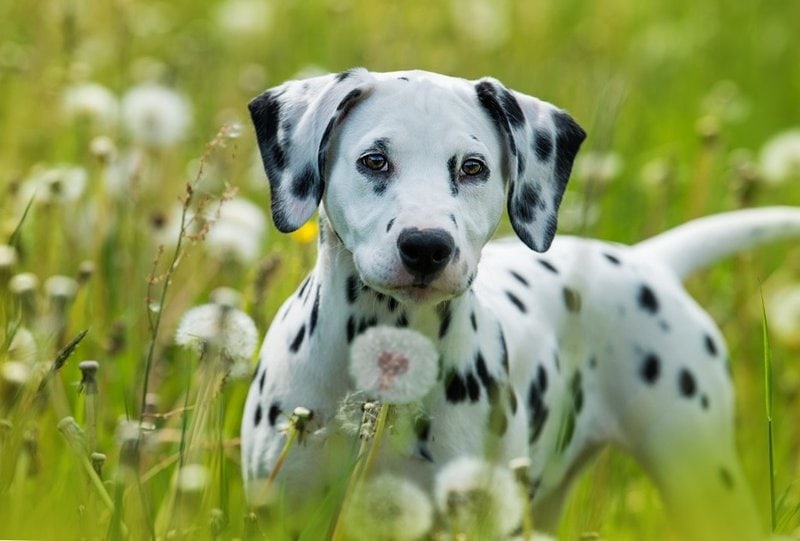With the rise in the pharmaceutical industry, dandelion, a plant that you’d probably find in your lawn or garden, moved to weed status. It was native to Eurasia and moved to where the travelers accidentally moved.
Herbalists viewed this weed differently from how we do and called them herbs. Even the USDA’s Federal Noxious Weed List doesn’t mention dandelion as a weed. Not only are dandelions great for honey bees, but they also offer nutrition benefits for humans. So, are dandelions good for dogs?
Yes, dandelion is another one of the common weeds that has a long list of nutritional benefits to dogs, and you can’t afford to ignore it. It is an antibacterial, digestive, and liver tonic that has lots of benefits to the dog. In fact, it takes several herbs and foods to replace the benefits your dogs get from consuming dandelions alone.
If you’re still wondering whether or not dandelions are safe for your dog to consume, then keep reading. We’ll help you learn a bit more about dandelions to help you know what to expect and when you should be concerned.
Can Dogs Eat Dandelions?
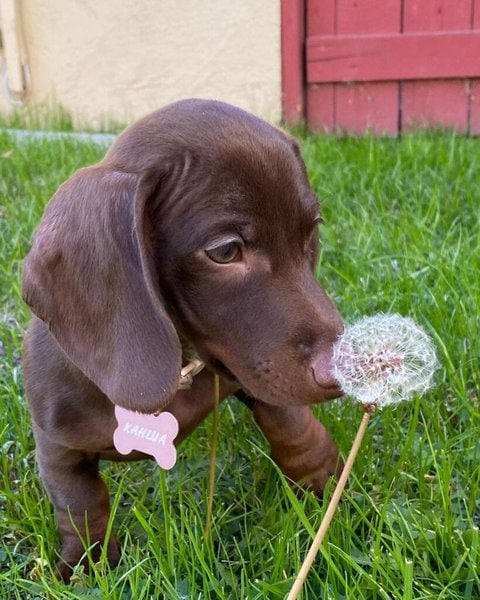
Yes, dogs can safely eat dandelions. In fact, all parts of the dandelions are a perfect source of minerals and vitamins. The dog’s body easily absorbs the nutrients, making it a great way to supplement your dog’s daily diet.
The bright yellow flowers provide antioxidants, high polyphenols, and lecithin levels. Furthermore, the leaves have lots of nutrients. They are rich in potassium, phosphorus, antioxidants, vitamins A, C, K, D, and B-complex, proteins, calcium, manganese, zinc, iron, and many other minerals.
What Are Dandelions?
Dandelions are basically weeds that grow in gardens and yards. They are also known as lion’s hair or dandelions, but the name dandelion is from a French word that means lion’s tooth. These plants are commonly used for medicinal purposes, with the earliest found centuries ago in Greece.
These plants are often found in Africa, Asia, North America, and Australia. However, in 1970, the travelers introduced them to New Zealand, where they thrived because its climate is similar to their native home, France. They can grow across different temperature zones, with a preference for sunny fields near forest edges.
In several cultures, dandelions are highly valued more than other vegetables since they are easy to grow, provide a nutrient-filled meal, and could be harvested during winter. Nowadays, dandelions are also being used as effective treatment and other health benefits.
Are Dandelions Flowers OK For Dogs To Eat?
Yes. Dandelion flowers have antioxidants that help fight chronic diseases caused by inflammation and free radicals. Other parts you should consider feeding your dog include;
- Leaves – Dandelion leaves are high in potassium as well as other minerals and vitamins. They come with antioxidant properties, act as a diuretic, and improve digestion.
- Root – Dandelion roots are mostly used by Traditional Chinese and Native American medicine to treat liver and stomach conditions. It is also used as a natural diuretic.
Dandelion stems are not the best for dogs to consume. This is because it lacks a great flavor and has a sticky white goo that may have a laxative effect. If you can, avoid feeding your dog dandelion stems.
Are Dandelions Poisonous To Dogs?
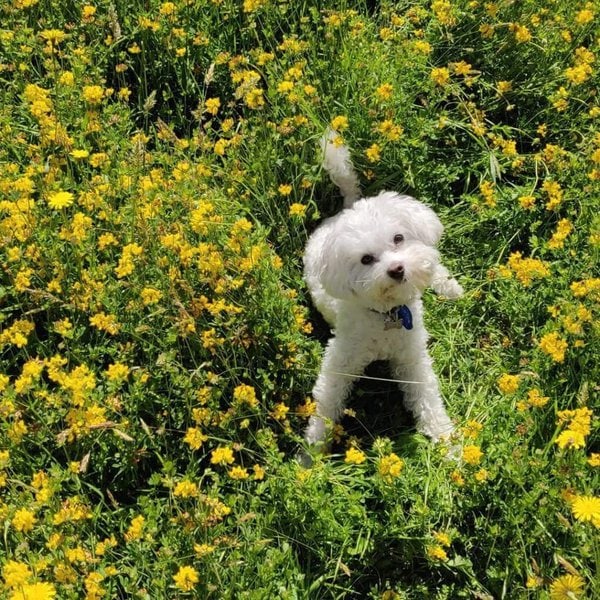
Dandelions themselves are not poisonous or toxic. All parts of the plant are safe for your dogs to consume. However, weed killers may be frequently used to get rid of the dandelions, and this may pose a risk should your dog consume the dandelions.
Most of these weed killers have a substance called glyphosate, which, when consumed in high concentration, can be poisonous to dogs. So, be careful when picking a dandelion to feed your dog.
Some symptoms of weed killer poisoning can include breathing problems, seizures, lethargy, vomiting, and diarrhea. If any of the symptoms are seen in your dog after feeding dandelions, do contact and visit your vet right away for medical advice.
Will Eating Dandelions Hurt My Dog?
Generally, dandelions are not harmful to dogs but similar to most things, and they should be served in moderation. This is because too many dandelions can lead to diarrhea, excessive peeing, heartburn, increased potassium levels, abdominal discomfort, and increased heart rate.
Furthermore, as mentioned earlier, stems can have a laxative effect which may harm your dog. Therefore, be sure to clean the dandelions properly and serve them in moderation.
Are Dandelions Beneficial To Dogs?
Dandelions are an excellent nutrient provider for both you and your dog. They provide herbal benefits and are used to support digestive, heart, kidney, and liver function.
In addition, the dandelion flowers have antioxidants and come in handy to improve the immune system.
So, let’s take a closer look at some of the ways your dog can benefit from consuming dandelions.
High Levels Of Antioxidants
Dandelion flowers and leaves have great levels of antioxidants that fight the free radicals, helping prevent diseases. They also help boost their immune system and slow down the aging process.
When the free radicals are too much for the dog’s body to manage, health problems such as cancer, arthritis, dementia, heart disease, and other autoimmune diseases may start to appear.
Anti Inflammatory Benefits
For a long time, dandelions have been used as herbal medicines to relieve pain and reduce inflammation. This is because they feature polyphenols that boast powerful anti-inflammatory benefits.
In addition, they have terpenoids, flavonoids, and alkaloids that add value as inflammatory properties. Research has shown that all parts of the dandelion have these natural anti-inflammatory compounds, with the flower being especially beneficial.
Aids In Digestion
Dogs with chronic digestion or those with excess gas would benefit from eating dandelion leaves. It comes in handy to stimulate the digestive juices that help with digestion as well as increase appetite.
Antimicrobic Benefits
Dandelions boast infection-fighting abilities when used as a wash or made into tea. Research has shown that the entire plant has these properties, but the flower and the roots are the most effective antimicrobic elements.
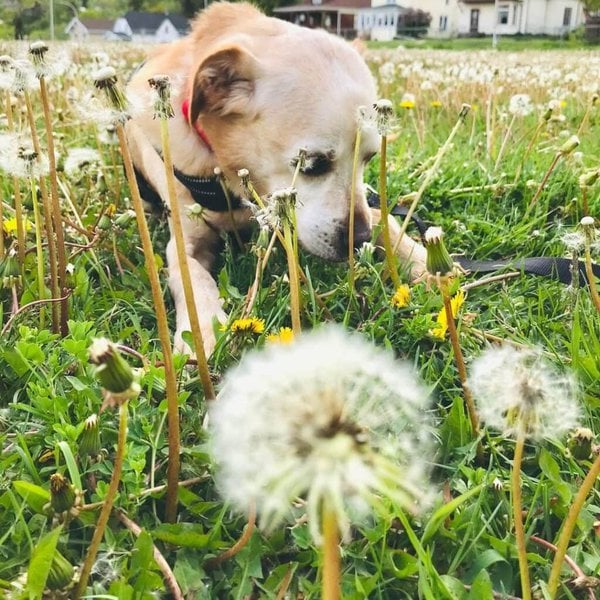
Acts As A Liver Tonic
The liver is a responsible organ that helps the body remove all toxins to ensure it stays healthy. Dandelion roots act as a liver tonic to increase the circulation in the liver and stimulate bile production.
This way, the dog’s body is able to remove toxins as waste via the kidneys. Dandelion roots also help treat gallbladder inflammation and gallstones. If you see dandruff, chronic constipation, or skin disease, you should consider giving your dog dandelions.
Hypoglycemic Benefits
Insulin is an important requirement for any dog’s body to digest proteins, fats, and sugars effectively. When the pancreas is unable to produce enough insulin, diabetes mellitus may occur in dogs.
Dandelions help increase insulin sensitivity and reduce sugar levels. As a result, various forms of these hypoglycemic herbs can help manage diabetes, including powder, juice, tincture, fresh and dried leaves.
Acts As Diuretic
When your dog’s body is retaining too many fluids, then the dandelion leaves can be used as a diuretic.
Fluid retention can be caused by various conditions, including swollen tissues, kidney disease, diabetes, and heart failure. Dandelion comes loaded with potassium which helps replace lost when urinating frequently.
It Is A Superfood
If you didn’t know, dandelion is one of the complete plant foods you could find, and that is why it is one of the superfoods.
A cup of fresh dandelions will provide 20% protein, double the amount spinach provides, 2,000 IUs of vitamin A, vitamins C, K, D, and B-complex, phosphorus, iron, and other important minerals.
How Can You Prepare Dandelion For Dogs?
There are a variety of ways you can use to prepare the dandelion flowers, leaves, and roots. Here are some of the best ways you should consider;
Using Fresh Leaves
Adding fresh leaves or flowers to the dog’s dinner. You can add a leaf or two for small dogs and more for larger dogs. You can also choose to blend the leaves with water and add it to the dog’s meal.
Using Dried Leaves Or Roots
Drying the leaves and roots and adding them to your dog’s meal. It is advisable to add 1 teaspoon per 20 lbs of the dog’s body weight.
Making A Bitter Tonic
Blend the dandelion leaves together with some broth and give your dog to drink before dinner. If this doesn’t work, you can also add 1 or 2 teaspoons to the dog’s meals. This drink aids in digestion for dogs.
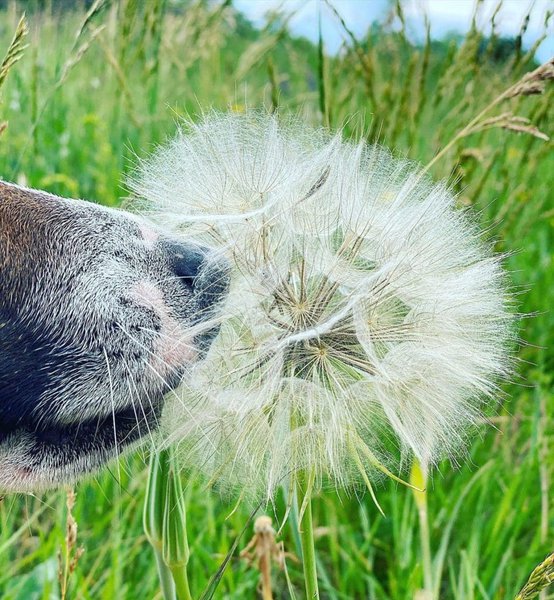
Dandelion Tea
To make the dandelion tea, use approximately 0.17 to 1 oz of dried dandelion and infuse it in 8 oz for about 15 minutes. Feed your dog ⅓ of a cup of dandelion tea for every 20 lbs of the dog’s body weight, 1 to 3 times, daily.
When Should You Harvest Dandelions?
Dandelions normally bloom in spring then flower in the fall. They grow in rosettes with a single taproot that comes straight from the ground.
As a result, harvest the dandelion leaves in the early spring before the flowers start to bloom. If you harvest after this period, then the leaves may become very bitter.
Once you’re done harvesting, allow them to dry, then store them in bags or freeze them loosely when fresh to ensure you have some left for the off-season. You can also slice them into smaller pieces and dry them in the sun. The same is done for dandelion flowers.
If you want the dandelion roots, then you should wait until late fall. Dig them from the ground, chop them into smaller pieces, then leave them out to dry.
While dandelions are not poisonous, some pesticides may be used around. So, be careful when harvesting them from public areas where they have probably been sprayed. You should only pick them from your yard.

